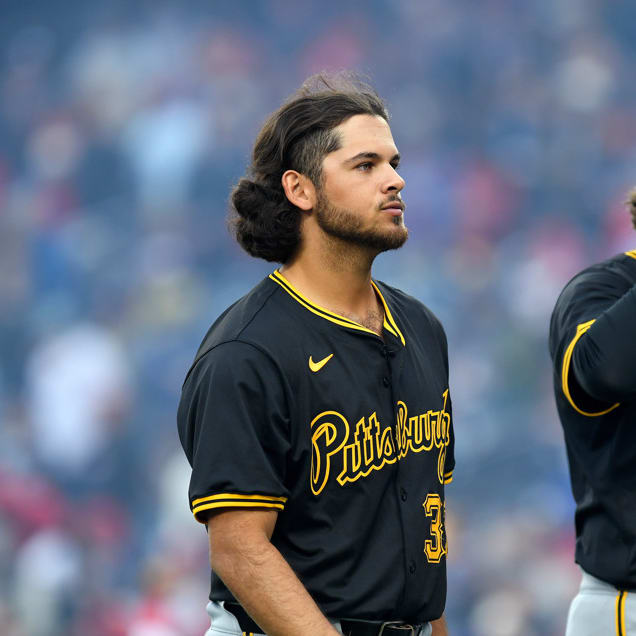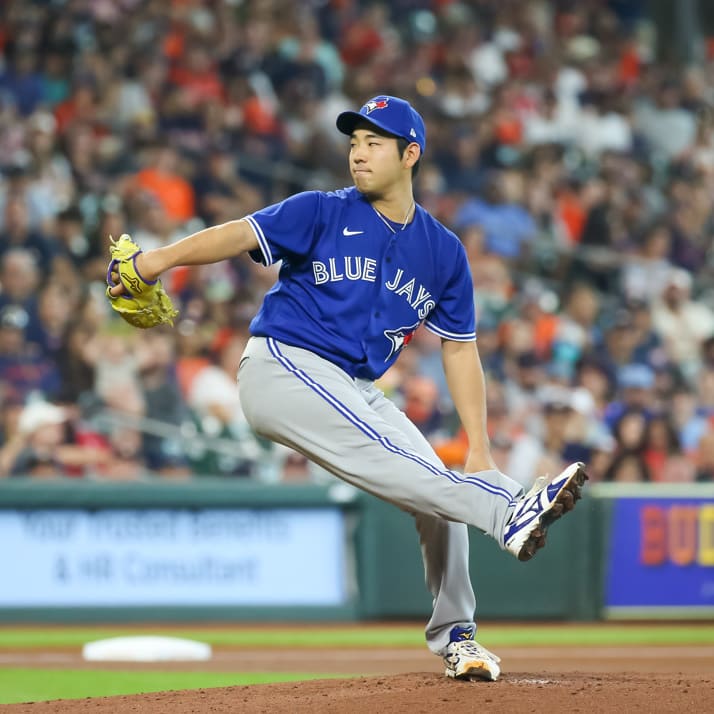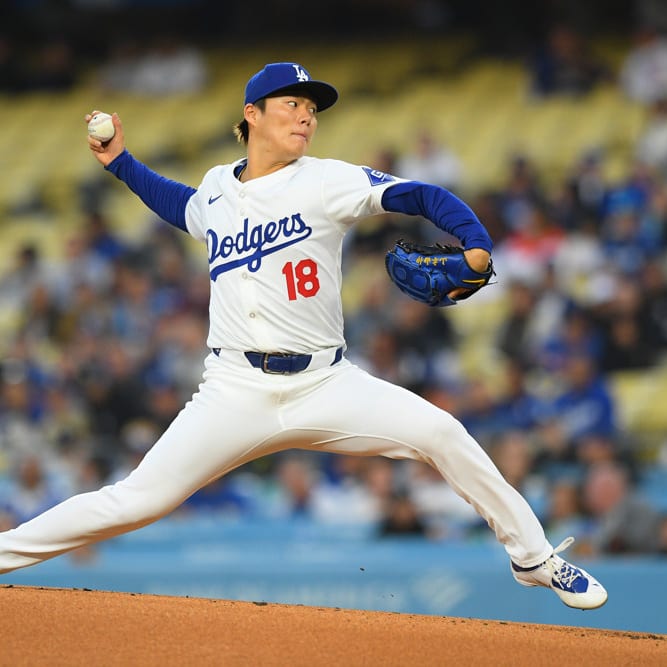This article is part of our Mound Musings series.
Time to Start the Prospect Watch - National League
I just tore a page off of my 2014 calendar and see that April has turned to May. Teams desperate for rotation help might be tempted to look at their young guns fairly soon, and the more frugal organizations will be looking at their options when they can bring a pitcher up without triggering Super 2 status - typically in June. For fantasy owners this is a great time to strategize. Last week, I looked at American League possibilities, and now I'll switch over to the National League. Track these guys and be ready to pounce when a call-up is imminent. Let's look at some of the National League possibilities.
Many will come and go, but a few can make a big impact.
Last week I talked about some of the things that could expedite or delay a blue chip prospect's arrival, and I'd like to continue with some more thoughts along those lines. Further, I'll talk a little more about what reinforces the potential for positive impact, and conversely, what to look for in pitchers you might want to avoid.
There is one huge factor that you can easily determine, even without watching the pitcher in question. It's pedigree. That is, does the team have a considerable investment in the pitcher being called up? If the pitcher was drafted in the first, or sometimes second, round, the team undoubtedly spent a considerable sum of money signing him. To get a
Time to Start the Prospect Watch - National League
I just tore a page off of my 2014 calendar and see that April has turned to May. Teams desperate for rotation help might be tempted to look at their young guns fairly soon, and the more frugal organizations will be looking at their options when they can bring a pitcher up without triggering Super 2 status - typically in June. For fantasy owners this is a great time to strategize. Last week, I looked at American League possibilities, and now I'll switch over to the National League. Track these guys and be ready to pounce when a call-up is imminent. Let's look at some of the National League possibilities.
Many will come and go, but a few can make a big impact.
Last week I talked about some of the things that could expedite or delay a blue chip prospect's arrival, and I'd like to continue with some more thoughts along those lines. Further, I'll talk a little more about what reinforces the potential for positive impact, and conversely, what to look for in pitchers you might want to avoid.
There is one huge factor that you can easily determine, even without watching the pitcher in question. It's pedigree. That is, does the team have a considerable investment in the pitcher being called up? If the pitcher was drafted in the first, or sometimes second, round, the team undoubtedly spent a considerable sum of money signing him. To get a return on that investment, it needs to keep him under contract for several years, and reap long term benefits from his services. Wasting service time when he isn't ready or there isn't a real need is counterproductive.
Compare that to a 28-year-old minor league veteran who was drafted in the 17th round seven years ago and has had a handful of brief appearances at the major league level. He is off to a career best start at Triple-A, but it's a small sample size, he has been working against that level for a couple of seasons, and he has done it for about three organizations. He could be lightning in a bottle, but don't bet on it.
The much better bet is the high-round draft choice who is still on the young side and has moved steadily through the minor league levels for the organization that drafted him. He would preferably be at Double-A or Triple-A, perhaps making the jump from one to the next to begin this year, and while you can forgive the pitcher hitting a plateau and struggling a bit when he first moved up to a new level, he should be showing clear signs he is figuring it out. Look for rising strikeout rates, declining walk rates; I really want to see below a hit an inning, at least recently - and the farther below the better.
Here are some NL arms I am eager to see called up:
•Noah Syndergaard (Mets) - Back when he was in the Blue Jays organization I fell in love with this guy, and he has reinforced my initial perceptions every step of the way. He blends excellent stuff, command and poise on the mound into what should soon translate into a top-of-the-rotation major league pitcher. The Mets have Matt Harvey (Tommy John surgery) and Zack Wheeler in the stable, and I actually like Syndergaard a bit more than either of them. He's getting his feet wet at Triple-A, but his day is coming soon.
•Archie Bradley (Diamondbacks) - A lot of analysts list Bradley as the top pitching prospect in baseball, but while I am high on him too, there are actually several others I like better. He certainly has the arm, but I have not seen the development in his changeup I like to see, and his delivery is still not very repeatable in my eyes, so his command is inconsistent. Add to that a mild flexor strain (elbow), which could be a warning sign, and I am lukewarm. If he can show me a more fluid delivery, I'll be much more enthusiastic.
•Matt Wisler (Padres) - I liked him but wasn't overly excited about when I first saw him. But he has moved up on my list with the same ease he has moved through the Padres system. He has a good fastball and an arsenal of solid secondary pitches, all of which he can throw for strikes. And, perhaps the best part, his approach and demeanor on the mound allow him to confidently use them all as needed. Put a plus in the maturity column and give him a little extra credit for calling Petco Park home. He has had little trouble transitioning to Triple-A this season (1.07 WHIP, 2.10 ERA, and a 35:6 K:BB), so a summer trip to San Diego should be in the plans.
•Zach Lee (Dodgers) - Lee has been something of a quiet prospect - he gets some recognition, but he is sometimes overlooked when the top guns are being discussed. Probably the biggest reason is his calling card composure. He's a thinking man's pitcher. He has good stuff, but not great, and he succeeds by outthinking his opponents. He has made his way to Triple-A, and he is still figuring that out, but there is a good chance the Dodgers give him a call later this year. The organization has made habit out of developing pitchers like Lee.
•Andrew Heaney (Marlins) - Heaney sneaks onto the list because the guy who would have been at the top, Jameson Taillon, just had Tommy John surgery and will miss the 2014 season. That's not to take anything away from him. However, he is just 22-years-old, he's a southpaw, and he is still at Double-A, albeit he is pitching very well there. He has the tools to be a very good one, and he is in an organization that is quickly becoming recognized for developing high quality young arms. The question is more when than if, and there is a chance he could be in Miami later this year.
Some Other Notable Rotation Ramblings:
• It's not often in a sport as old as baseball that you can say something happened that has never happened before. Jeff Samardzija is winless after seven starts despite sporting a 1.62 ERA and 1.12 WHIP. No pitcher has ever gone seven starts with an ERA less than 2.00 and no wins. On another team he is Cy Young.
• While Jose Fernandez deservedly gets much of the fanfare, "that other Marlins' guy" is really coming into his own as well. Nathan Eovaldi is consistently getting ahead in the count, so he doesn't have to throw fastballs. He has a 45:6 K:BB ratio to show for it.
• True or False? Bogfella has given up on Brandon Morrow. It's still false - I actually just recently acquired him in the only league I didn't own him - but even my patience is being tested. I still see it, just not often enough, and the injuries are making it difficult for him to ever provide consistency.
• I really don't think the Rays' Erik Bedard can help many fantasy teams over the long run, but it sure is fun to watch him when he is throwing his breaking stuff to spots. It's hard to believe that it has been six or seven years since he was one of the more exciting pitchers in the game. I am so tempted - no, let it go.
• I've discussed how major league scouts tend to shy away from shorter starting pitchers, but success is possible for the little guy. Johnny Cueto is listed at 5-foot-11 (and that may be generous), yet I have been more impressed with him so far this year than any pitcher in baseball. If he stays healthy it can continue.
•Marcus Stroman should be in the Blue Jays rotation fairly soon, but I think he'll likely replace Drew Hutchison or J.A. Happ, and not Dustin McGowan. Yes, McGowan is injury prone, and he has struggled to get his groove back, but he has a higher ceiling than either of the other two.
• You might want to check the waiver wire in your league. I wouldn't want you to miss out on Clayton Kershaw. OK, I was originally going to add this note as a little mound musing, but then I looked and he is only owned in 98-99 percent or so of the leagues with some services! Certainly scouring the waiver wire can be a rewarding endeavor, though I wouldn't count on finding a Kershaw.
Endgame Odyssey
I'll start this edition by saying Casey Janssen can't get healthy fast enough for the Blue Jays. Sergio Santos started reasonably well but has been nothing short of abysmal lately, which led to his removal as their closer. The Jays are plugging the hole with Aaron Loup and Brett Cecil, but if for any reason Janssen would be out long term, it wouldn't surprise me to see Marcus Stroman or maybe Dustin McGowan closing. ... The Reds will be nearly as happy to welcome Aroldis Chapman back and so will his fantasy owners. He may be back by the time you read this, or very shortly after. ... There has already been a lot of chatter about Kenley Jansen's workload, and the Dodgers are making an effort to give him a little more rest. He should be fine if they keep his innings under control. ... Last week I mentioned I wasn't too comfortable with Joe Smith closing for the Angels, and they must not be either. Smith was slated to close Monday, but he got sick during the game so Ernesto Frieri got the ball. He is close to officially getting his job back. ... The Cardinals' Trevor Rosenthal is clearly the closer for the future, but he has had some issues with command early on. If Jason Motte is sharp when he returns, would they have him close for a while to show case him? I don't think so unless Rosenthal really struggles. ... John Axford has been looking an awful lot like the Axford that frequently couldn't get the job done lately. I don't think he is in serious danger yet but he needs a few solid outings to stabilize his position. Cody Allen or Bryan Shaw would be the handcuffs.










